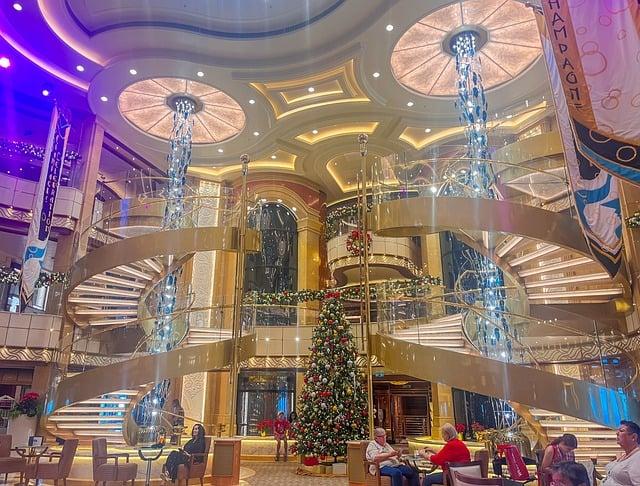Once upon a time, in a small village blanketed by snow, the townsfolk gathered to celebrate a special day. They called it “Christmas,” a word derived from “Christ’s Mass,” marking the birth of a child who brought hope and light to the world. As they lit candles and shared stories, the villagers realized that Christmas literally meant a gathering to honor love and compassion. Each flickering flame symbolized their unity, reminding them that the true essence of Christmas was not just in the gifts, but in the warmth of togetherness.
Table of Contents
- Exploring the Etymology of Christmas and Its Historical Roots
- The Significance of the Nativity in Christmas Celebrations
- Cultural Variations: How Different Societies Interpret Christmas
- Modern-Day Practices: Balancing Tradition and Contemporary Celebrations
- Q&A

Exploring the Etymology of Christmas and Its Historical Roots
The term “Christmas” is derived from the Old English phrase “Cristes Maesse,” which translates to “Christ’s Mass.” This nomenclature reflects the Christian tradition of commemorating the birth of Jesus Christ, a pivotal figure in Christianity. The celebration, which takes place on December 25th, has roots that extend beyond its religious significance, intertwining with various cultural and historical practices. The word “mass” itself is derived from the Latin “missa,” indicating a dismissal, which is a reference to the concluding part of the Eucharistic service. Thus, Christmas not only marks a religious observance but also encapsulates a rich tapestry of linguistic evolution and cultural adaptation over centuries.
Historically, the celebration of Christmas has absorbed influences from pre-Christian winter solstice festivals, such as the Roman Saturnalia and the Norse Yule. These ancient festivities emphasized themes of light, rebirth, and community, which resonate with the modern spirit of Christmas. As Christianity spread throughout Europe, early church leaders sought to integrate these existing traditions into the new faith, leading to a unique blend of customs that we recognize today. The adoption of various symbols, such as the Christmas tree and gift-giving, further illustrates how the holiday has evolved, reflecting a fusion of religious and secular elements that continue to shape its meaning in contemporary society.

The Significance of the Nativity in Christmas Celebrations
The Nativity, depicting the birth of Jesus Christ, serves as the heart of Christmas celebrations, embodying themes of hope, love, and renewal. This sacred event is not merely a historical account; it symbolizes the arrival of light into a world often shrouded in darkness. The imagery of the humble manger, surrounded by shepherds and wise men, invites reflection on the values of humility and compassion. As families gather around their Christmas trees, the Nativity scene often takes center stage, reminding us of the profound significance of this moment in history.
In many cultures, the Nativity inspires various traditions and customs that enrich the festive spirit. These include:
- Nativity Plays: Community performances that reenact the birth of Christ, engaging audiences of all ages.
- Advent Calendars: Countdown calendars that often feature Nativity scenes, building anticipation for Christmas Day.
- Caroling: Songs that celebrate the Nativity, spreading joy and goodwill throughout neighborhoods.
Through these practices, the Nativity not only enhances the celebration of Christmas but also fosters a sense of unity and shared purpose among individuals and communities, reminding us of the enduring message of peace and goodwill that the season represents.

Cultural Variations: How Different Societies Interpret Christmas
Christmas, while rooted in Christian tradition, has evolved into a multifaceted celebration that varies significantly across cultures. In many Western societies, it is characterized by the exchange of gifts, festive decorations, and family gatherings. However, in countries like Ethiopia and Egypt, Christmas is celebrated on January 7th, aligning with the Julian calendar. Here, the focus is on religious observance, with church services and communal meals taking precedence over commercial festivities. The essence of the holiday transforms, emphasizing spiritual reflection rather than material indulgence.
In Latin America, the celebration takes on vibrant local flavors, with traditions such as the “Posadas” in Mexico, where communities reenact Mary and Joseph’s search for shelter. This cultural interpretation highlights the importance of hospitality and community spirit. Similarly, in the Philippines, the “Simbang Gabi” tradition involves a series of dawn masses leading up to Christmas Day, showcasing a deep-rooted connection to faith and family. Each society infuses its unique customs and beliefs into the holiday, creating a rich tapestry of interpretations that reflect their values and heritage. The diversity of these practices underscores how Christmas transcends its origins, becoming a global celebration that resonates with various cultural identities.

Modern-Day Practices: Balancing Tradition and Contemporary Celebrations
In today’s world, the celebration of Christmas has evolved into a vibrant tapestry woven from both ancient traditions and modern influences. While many still honor the religious significance of the holiday, others embrace a more secular approach, blending various cultural practices. This fusion can be seen in the way families decorate their homes, often combining traditional symbols like the nativity scene with contemporary elements such as inflatable yard decorations and elaborate light displays. The essence of Christmas now encompasses a broader spectrum of activities, allowing individuals to create their own unique celebrations that resonate with their personal beliefs and values.
Moreover, the culinary traditions associated with Christmas have also adapted to reflect contemporary tastes and lifestyles. While classic dishes such as roast turkey and fruitcake remain staples, many families are now incorporating diverse cuisines into their holiday feasts. This shift not only highlights the multicultural nature of modern society but also encourages creativity in the kitchen. **Gift-giving**, **community service**, and **family gatherings** have taken on new forms, with many opting for experiences over material items, such as travel or shared activities. This evolution illustrates how the spirit of Christmas can be preserved while simultaneously embracing the dynamic nature of modern life.
Q&A
-
What is the literal meaning of “Christmas”?
The term “Christmas” literally means “Christ’s Mass.” It originates from the Old English word “Cristes-messe,” which refers to the mass or celebration of the birth of Jesus Christ.
-
Why is Christmas celebrated on December 25th?
December 25th was chosen to celebrate Christmas as it coincides with the Roman festival of Saturnalia and the winter solstice, making it easier for early Christians to adopt and spread the holiday.
-
What are some common traditions associated with Christmas?
- Decorating Christmas trees
- Exchanging gifts
- Attending church services
- Sharing festive meals with family and friends
-
Is Christmas only a Christian holiday?
While Christmas has Christian origins, it is celebrated by many people around the world, including those who may not identify as Christian, often as a cultural or secular holiday.
As we unwrap the layers of Christmas, we discover a tapestry woven with history, language, and tradition. Beyond the festivities, the essence of the season invites us to reflect on its deeper meanings, reminding us of the joy in connection and celebration.

大家好,我是彼得潘,專業的手法身體治療師。我喜歡探索和研究各種主題,並透過與人工智慧的合作分享專業、實用、有趣的文章。我們定期進行人工審核,以確保內容的準確性。如果您發現文章中有任何不準確的地方,請隨時與我們聯繫,我們會及時糾正。您可以透過 [email protected] 與我們聯繫。



